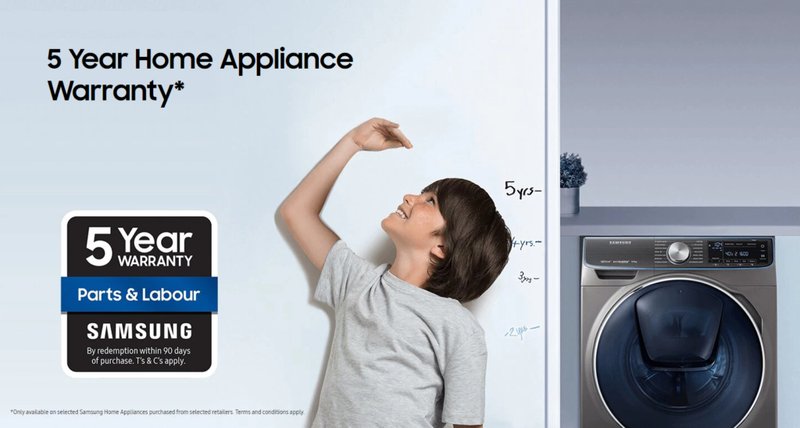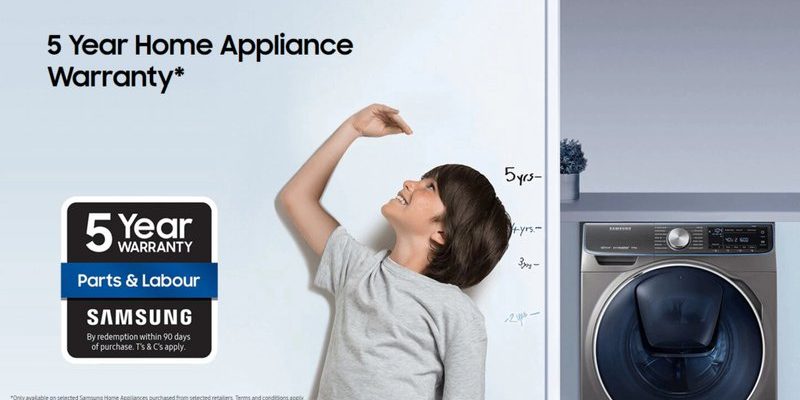
Think of a **Samsung kitchen appliance warranty** as your kitchen’s insurance policy. It doesn’t make your appliances bulletproof, but it does promise that, for a certain period, Samsung has your back if your gear suddenly stops working the way it should (as long as you’re not, say, washing sneakers in the dishwasher). But here’s the thing: warranties are never a free-for-all. There are always lines you can’t cross and situations they just won’t cover, no matter how nicely you ask. Let me break it all down, so you know exactly what’s covered, what’s not, and how to make the most of your Samsung warranty.
Understanding the Basics: What Is a Samsung Kitchen Appliance Warranty?
Picture getting a new Samsung fridge, oven, or dishwasher—everything’s shiny, buttons are still clicky, and all is right with the world. The **Samsung kitchen appliances warranty** is the official agreement from Samsung that, for a set amount of time (usually one year), they’ll repair or replace your appliance if something goes wrong due to a manufacturing mistake or a faulty part.
The warranty is basically Samsung saying, “Hey, if we messed up, we’ll make it right.” But, there are boundaries. The warranty doesn’t cover blown fuses from a wild power surge, or, say, dents from letting your kids race toy cars on the fridge door. It’s strictly for problems that are Samsung’s fault, not yours or Mother Nature’s.
Every major Samsung kitchen appliance—think **refrigerators, ranges, ovens, microwaves, dishwashers**—comes with its own warranty period and a checklist of what’s covered. Most of the time, you get a standard one-year warranty for parts and labor. Some appliances, like high-end fridges, might have extra coverage for big-ticket items such as compressors.
Here’s a helpful way to think about it: the warranty is closest to a guarantee that your new appliance will work as designed, barring any accidents or, well, “creative” uses.
What’s Actually Covered Under the Samsung Kitchen Appliances Warranty?
You might be wondering, “So what will Samsung actually fix if something goes wrong?” The warranty coverage is pretty clear about where Samsung steps in. Here’s how it usually works:
- Manufacturer Defects: If a part was faulty from the start—like a fridge door that won’t close or a dishwasher that refuses to fill with water—Samsung covers the replacement or repair.
- Mechanical Failures: This means things like a microwave that just stops heating or an oven that won’t maintain temperature (as long as it’s not caused by obvious misuse).
- Labor Costs: Samsung covers the cost of sending out their technician to handle repairs during the warranty period, so you don’t have to pay for the service call.
- Special Components: High-tech fridges may have extra coverage on sealed systems (compressor, evaporator, condenser) for 5–10 years—but often just for parts, not labor.
Here’s the thing: Samsung expects you to use the appliance as intended. If you’re running laundry in the dishwasher, that’s on you.
In practice, if your brand-new Samsung range can’t hold its temperature, or your fridge fan is buzzing like a hive, Samsung’s warranty should have you covered. You simply contact their **support team**, and they’ll handle the troubleshooting, code diagnostics, or even send a pro to reset or repair your appliance—at no cost (as long as you’re inside the coverage period).
What’s Not Covered: Common Exclusions and Gotchas
Let me be honest: the warranty is not a magic reset button for every kitchen mishap. There are some pretty strict boundaries. Here are the most common things not covered:
- Physical Damage: Scratches, dents, or cracks from moving mishaps, kids’ science experiments, or even accidental drops—sorry, but those aren’t covered.
- Normal Wear and Tear: Things like faded buttons, worn-out seals, or discoloration from years of pizza reheats are just part of life.
- Improper Installation: If you didn’t follow the manual or used the wrong power source, that’s not Samsung’s problem. Same goes for DIY repairs gone wrong.
- Power Surges and Natural Disasters: If your oven fries its circuit board during a thunderstorm, or a flood takes out your dishwasher, those repairs are on you (or your home insurance).
- Unauthorized Repairs: If you let your buddy try to “fix” the code error with a pair of pliers and a YouTube video, you’ve probably voided your warranty.
You might think this seems strict—but, honestly, most brands have similar exclusions. The warranty aims to fix issues that are really Samsung’s responsibility—manufacturing or material defects—not everything that could possibly go wrong.
How to Make a Warranty Claim with Samsung (Step by Step)
It’s one thing to know you should be covered. But when your Samsung fridge is flashing weird codes or your oven just won’t sync with the app, actually navigating warranty service can feel tricky. Here’s what you need to do:
- Gather Your Info: You’ll need the appliance’s model and serial number (usually on a sticker inside the door or at the back), plus your proof of purchase (like a receipt or invoice).
- Contact Samsung Support: You can start online or call the customer service line. They’ll ask you to describe the problem, so be specific—mention any error codes, symptoms, or anything you’ve tried to reset or troubleshoot.
- Follow Their Troubleshooting Steps: Samsung may walk you through some basic diagnostics. Sometimes, it’s as simple as performing a reset, power cycle, or checking the battery in a smart display panel.
- Schedule Service: If it can’t be fixed remotely, Samsung will send an authorized service pro. They’ll handle the repair or even replace the unit if necessary.
Pro tip: Don’t attempt repairs yourself, even if you’re handy. It nearly always voids the warranty.
This process is pretty streamlined compared to some brands. Samsung is known for relatively smooth warranty service, as long as you’ve stuck to their guidelines and haven’t tried to DIY a fix.
Special Coverage: Compressors, Sealed Systems, and Extended Warranties
Not every part of your Samsung kitchen appliance gets the same coverage. There’s a bit of fine print—especially for hidden or expensive components. For example, most **refrigerators** and some high-end ranges feature special warranties:
- Sealed Refrigeration Systems: Compressor, condenser, evaporator, and filter-dryer are often covered for 5 or even 10 years—sometimes only for parts, not labor after year one.
- Extended Warranties: You can usually buy extra coverage through Samsung or third-party providers, stretching your protection out an additional 3–5 years.
- Smart Components: If your appliance connects to Wi-Fi or uses a smart remote, check that the warranty covers those boards, modules, or displays for the full term. Sometimes smart features have their own timelines.
Let me explain why this matters: the compressor is like the engine of your fridge. If it fails after year two, and your warranty still covers the part, you could save several hundred bucks. But if labor isn’t covered, you’ll still be on the hook for the service call. Always read the specifics for your exact model.
When Your Problem Isn’t Covered: Alternatives and Next Steps
Sometimes you find yourself stuck—maybe your dishwasher leaks after you tried to pair it with a universal remote (don’t laugh, it happens), or your oven fails a year out of warranty. What now?
Here are some alternatives to try:
- Troubleshoot First: Samsung’s help site has tons of guides for code errors, resets, and syncing problems. Sometimes a quick reset or battery change is all it takes.
- Check for Recalls or Service Bulletins: Once in a while, Samsung issues free repairs for widespread defects, even outside warranty.
- Homeowners Insurance: If the issue is from a power surge, fire, or flood, your home insurance may help.
- Professional Repair: Out-of-warranty repairs are usually available from Samsung-authorized technicians. Always ask for an estimate before going ahead.
- Upgrade or Replace: With older appliances, sometimes the cost of repairs is close to buying a new one—especially if it’s several years old and parts are rare.
Here’s a tip: If you’re tech-savvy, look up troubleshooting guides before calling for help. But don’t attempt internal repairs unless you’re sure—your warranty and your safety matter most.
How Samsung’s Warranty Compares to Other Brands
You might be sizing up Samsung against other big names like LG, Whirlpool, or GE. Here’s some perspective: Samsung’s standard kitchen appliance warranty is comparable to most major brands. You usually get a **one-year parts and labor** deal, with possible extra coverage for sealed systems.
Where Samsung shines is with their extended warranty options and their pretty robust coverage for smart features (think Wi-Fi, sync, and code diagnostics). Some brands only cover the guts—not the smart display or app connections. On the other hand, in some regions, getting a quick repair can sometimes depend on local service availability, so your experience might vary.
If you want even more peace of mind: Consider an extended warranty, whether from Samsung directly or your retailer, especially for pricier smart appliances. It’s an extra cost, but it can save you a headache down the line.
Making the Most of Your Samsung Kitchen Appliances Warranty
Let’s wrap things up: your **Samsung kitchen appliance warranty** is a valuable safety net, but it’s up to you to use it wisely. Always register your product as soon as you bring it home, keep your receipt in a safe spot, and follow the user manual for installation and care. If something does go wrong, act fast—don’t wait for a tiny issue to turn into a full-on kitchen emergency.
And remember, warranties are meant to cover the unexpected, not the accidental. Treat your appliances with care, do basic troubleshooting when problems pop up, and rely on Samsung support for anything beyond your comfort zone. That’s how you keep your kitchen running smoothly—and your warranty working for you—without any unwelcome surprises.
